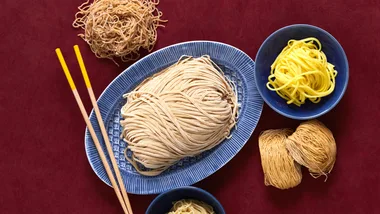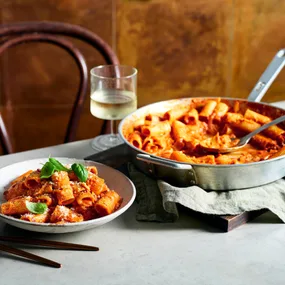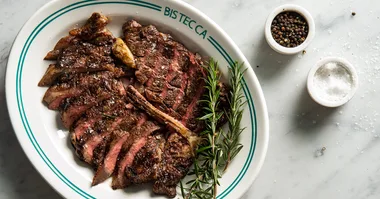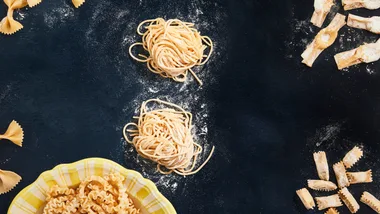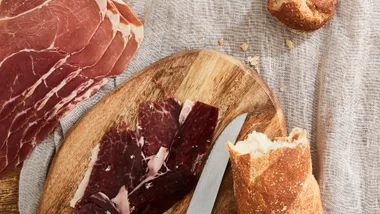Risotto can be as simple or as luxe as you like. At its most basic, you need only a few ingredients – butter, olive oil, onion, garlic, rice, stock and parmesan. From this base you can embellish at will. The butter, olive oil and onion are pretty self-explanatory; the garlic is optional. These elements combine to make the soffritto, the foundation on which the risotto rests, so for the best results, take your time and cook until the onion is very soft, but without colour.
The rice requires more explanation. Use arborio, vialone nano or carnaroli, depending on your preference. It’s worth noting at this point that there are two styles of risotto, and neither is wrong, only different. Knowing which style you like will help you get a lot closer to achieving the perfect risotto for you.
The looser, wetter style of risotto is known as all’onda (wavy) and is served in the Veneto. If you like this style, choose vialone nano, a short, stubby grain high in amylase, which softens slowly, giving the risotto some resistance to the bite.
If you prefer a thicker risotto, such as those served in Emilia-Romagna, Piedmont and Lombardy, arborio is your grain. It’s large, plump and high in amylopectin, which dissolves in cooking, creating a stickier texture.
Marcella Hazan’s; The Essentials of Classic Italian Cooking explains it neatly: “The Piedmontese/Milanese/Bolognese style is more compatible with substantial flavour bases founded on cheese, sausage, game and wild mushrooms, whereas the Venetian risotto all’onda achieves great delicacy with seafood and spring vegetables.” Hazan says carnaroli is the king of risotto rices. It contains enough soft starch to dissolve in cooking but enough tough starch to cook to a satisfyingly firm consistency. As no two risotti are ever the same, our advice is to experiment with the different rice varieties until you discover the one you like best.
Now add the rice to your soffritto, stirring to coat in oil and toast the grains, which ensures the rice will cook uniformly. Once this is done, add the wine, stirring continuously until it evaporates completely.
Next add the stock. It must be hot, just below simmering point. Good-quality stock is a must, but keep in mind that as the stock reduces, it intensifies in flavour, so you may want to add a little water to prevent the risotto being overpowered by the stock’s flavour. Add the stock a ladleful at a time, stirring continuously until it is all absorbed before adding the next lot.
The constant stirring allows the stock to be simultaneously absorbed and evaporated, and also serves to transform the rice’s soft starch into a clinging agent, binding the grains together. The amount of stock required will vary according to the type and quantity of rice you’re using and the consistency you prefer, so err on the side of having extra stock in reserve.
At some point during this process, you’ll add your flavourings. Consider whether they’re delicate (as with the herbed pea and pancetta risotto), or more robust, and time it accordingly. Ingredients such as pancetta or sausage, which benefit from browning, can be added to the pan after cooking the soffritto.
Once the rice is al dente (20-30 minutes, depending on the ‘bite’ you like), remove the pan from the heat and stand for a minute, then beat in the parmesan and final addition of cubed cold butter, making sure it’s well combined. Contrary to popular belief, risotto benefits from cooling for a minute or two before eating, which is why it’s often served in a wide, shallow bowl.
 Vanessa Levis
Vanessa Levis

